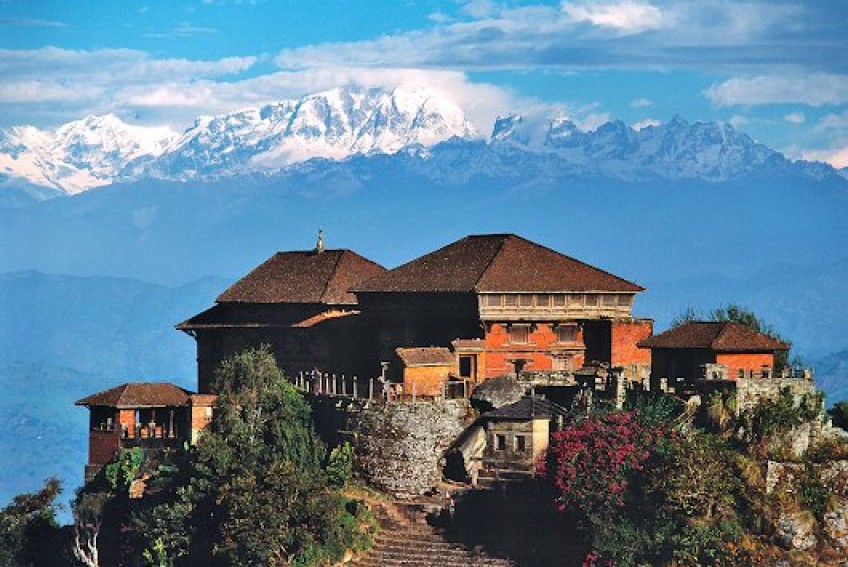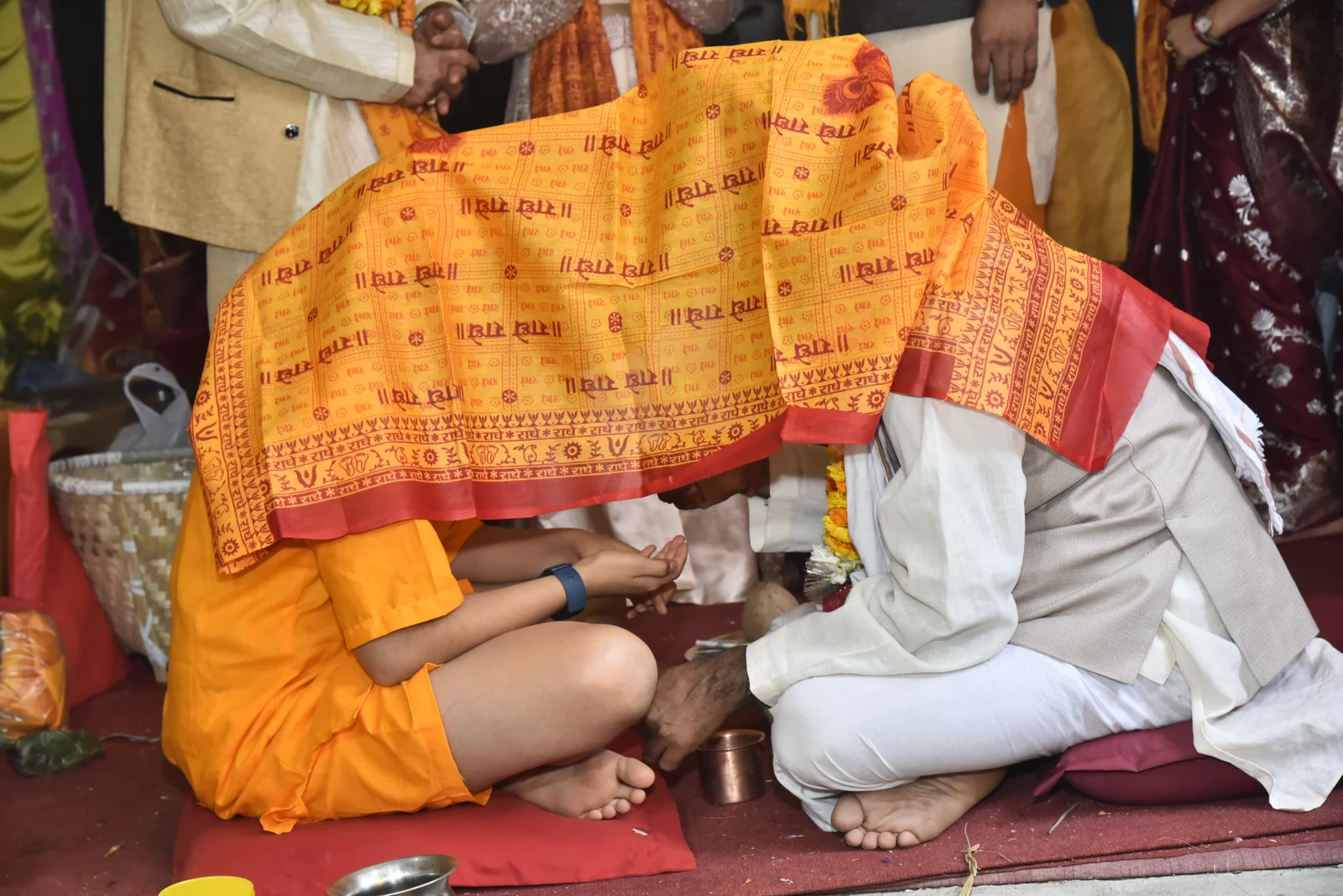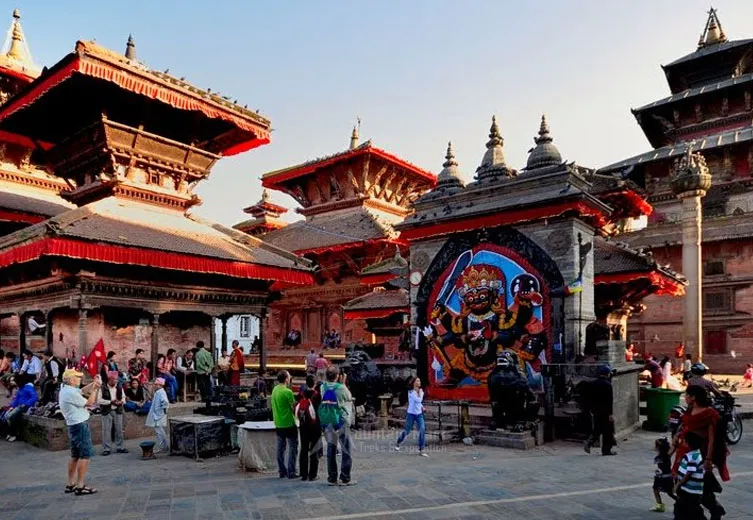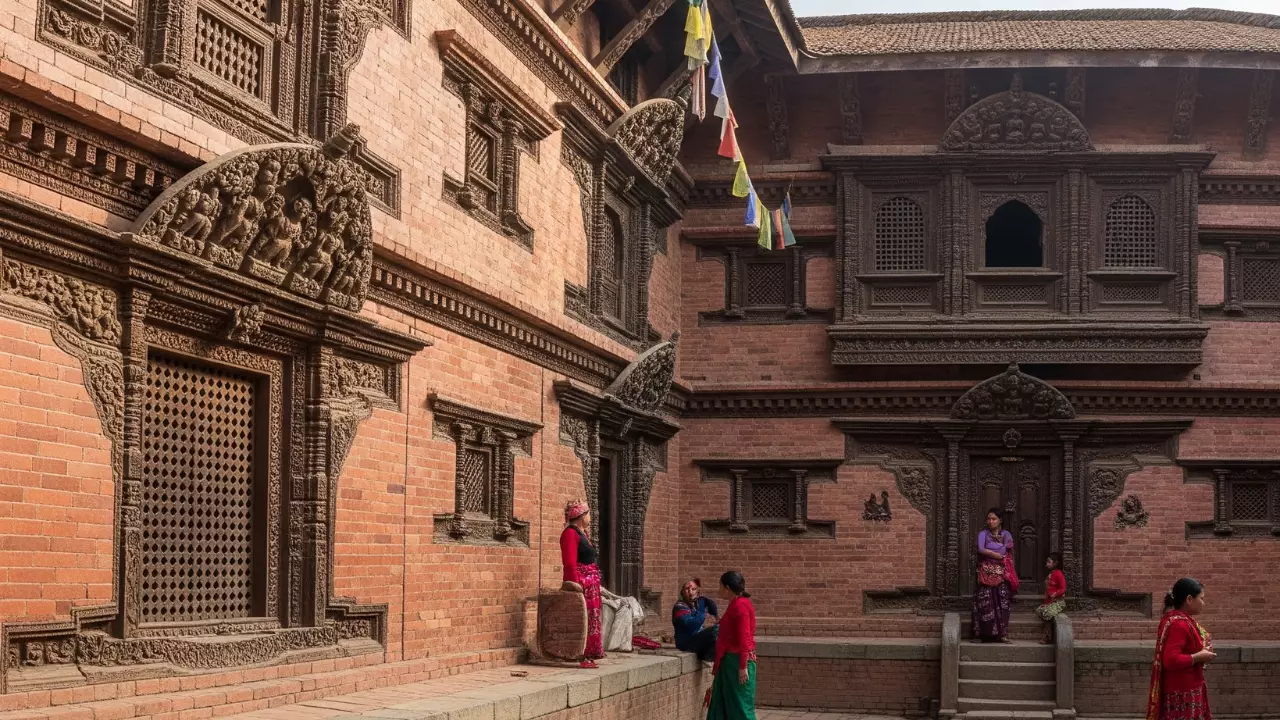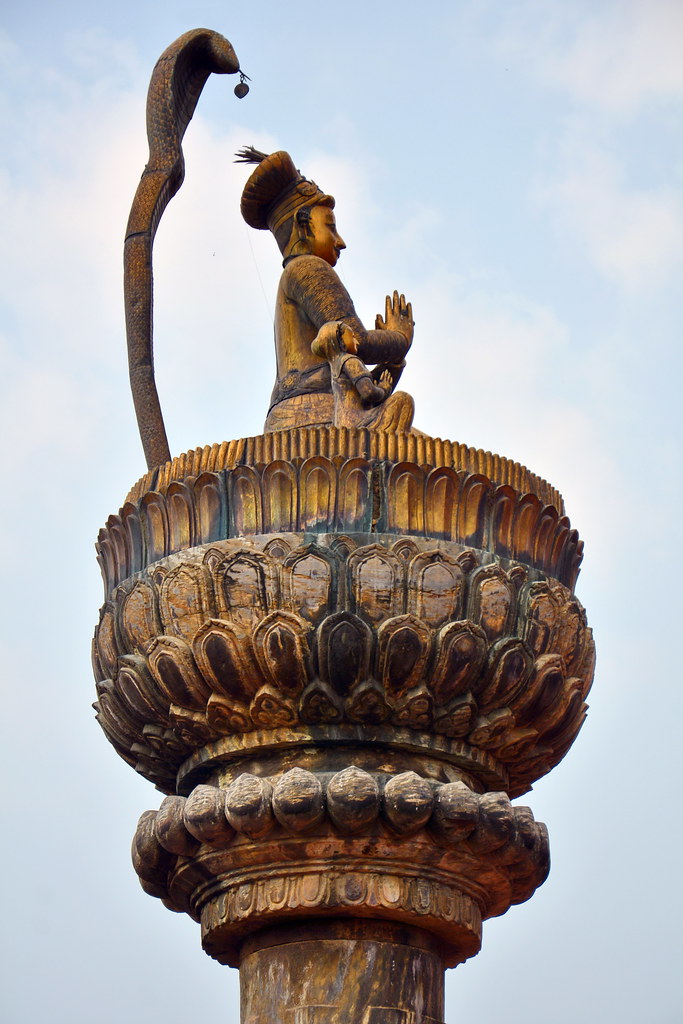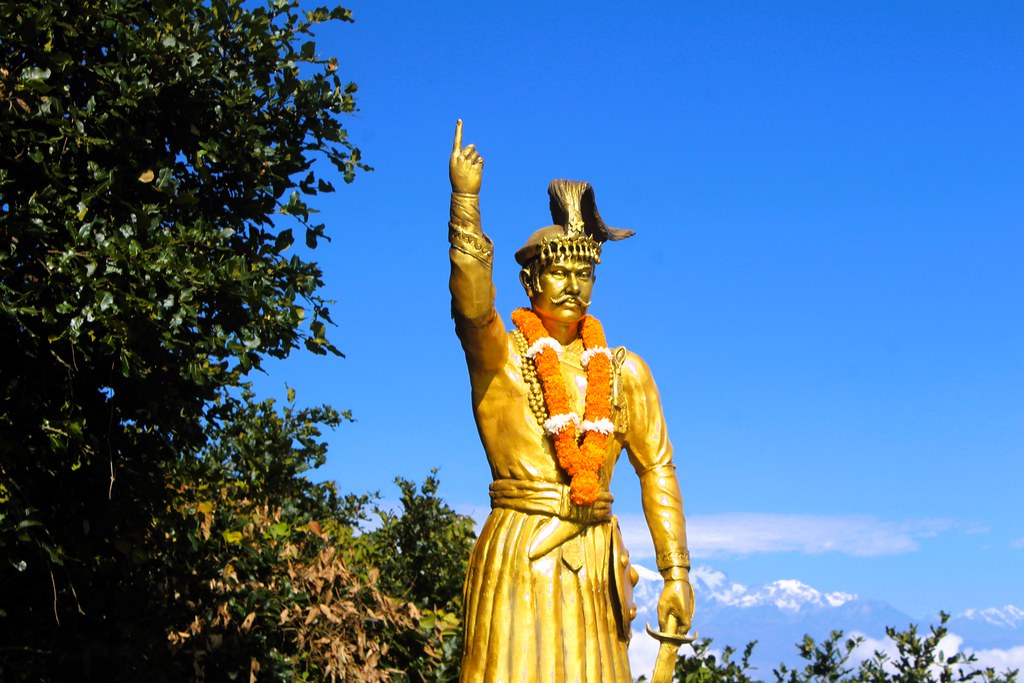Share this Article
Introduction: The Heart of Gorkha’s Heritage
Perched atop a rugged hill overlooking verdant valleys, Gorkha Durbar is a monumental symbol of Nepal’s history, culture, and the unification of the nation. Built in the 16th century, the palace served as the seat of the Gorkha Kingdom and the ancestral home of King Prithvi Narayan Shah, the visionary leader who laid the foundation for modern Nepal. Its location was strategically chosen, providing commanding views of the surrounding hills and valleys, which allowed rulers to defend their kingdom while planning administrative and military campaigns. Gorkha Durbar is not just a palace; it is a cultural and spiritual hub that blends political authority with religious devotion, illustrating how governance and spirituality were intertwined in the history of Nepal.
The palace is also a lens through which one can understand the broader history of the Gorkha Kingdom, including its role in unifying fragmented principalities. Beyond its stone walls and fortified gates, the palace has witnessed centuries of political intrigue, religious ceremonies, and community life. Today, it stands as both a heritage site and a testament to the vision and resilience of the Shah dynasty, drawing historians, tourists, and cultural enthusiasts alike.
Historical Significance of Gorkha Durbar
Gorkha Durbar occupies a central place in Nepalese history, primarily as the birthplace and power center of Prithvi Narayan Shah. Born in 1723, Shah grew up within the palace, absorbing lessons in governance, military strategy, and diplomacy from his mentors and family elders. From this hilltop throne, he envisioned a unified Nepal, a vision that would later transform the political landscape of the entire region. The palace served as his administrative headquarters, a military command center, and a ceremonial hub, reflecting both the personal and political dimensions of his reign.
The Durbar also played a key role in consolidating the Shah dynasty’s authority. Royal decrees, treaties, and alliances were formulated within its halls, shaping the trajectory of the Gorkha Kingdom. Its historical importance is further emphasized by its survival through wars, natural disasters, and political transitions. As a site where history was actively made, Gorkha Durbar is a repository of stories that connect local governance, national identity, and regional influence, making it indispensable to understanding Nepal’s past.
Architectural Splendor and Design
Gorkha Durbar is a remarkable example of traditional Nepalese architecture, showcasing the craftsmanship of Newar artisans and the functional requirements of a hilltop fortress. The palace complex is characterized by intricately carved wooden windows and doors, multi-tiered pagoda-style roofs, and fortified stone walls that convey both aesthetic beauty and defensive strength. Each element, from the courtyards to the throne room, was meticulously planned to serve administrative, ceremonial, and residential purposes.
Inside the palace, courtyards were spaces for public gatherings, religious ceremonies, and military assemblies. The king’s chambers were designed for both comfort and security, reflecting the delicate balance between domestic life and political authority. Temples and shrines within the palace complex, dedicated to deities such as Kalika Devi and Gorakhnath, were seamlessly integrated into the architecture, underscoring the spiritual dimension of royal life. The blend of artistry, functionality, and spiritual symbolism makes Gorkha Durbar not only an architectural landmark but also a cultural treasure.
Prithvi Narayan Shah: The Visionary King
Prithvi Narayan Shah’s legacy is inseparable from Gorkha Durbar. From his ancestral throne, he strategized the unification of Nepal, connecting fragmented principalities under one rule. His early education within the palace included lessons in diplomacy, warfare, and administration, preparing him to become a leader capable of navigating complex political landscapes.
Shah’s campaigns, planned from Gorkha Durbar, combined military precision with strategic alliances. He was known for both his bravery and foresight, leveraging the palace’s location for surveillance and defense. The palace thus became a symbol of his vision, reflecting the combination of political acumen and cultural reverence that defined his reign. Today, visitors can sense the historical significance of the palace, imagining the deliberations, ceremonies, and decisions that shaped modern Nepal.
Religious and Cultural Significance
Religion and governance were closely linked in the Gorkha Kingdom, and Gorkha Durbar exemplifies this integration. Temples within the palace complex served as sites of daily worship, festival celebrations, and royal rituals. Kalika Devi Temple, located within the premises, was central to royal ceremonies, where kings and their families sought divine blessings for protection and prosperity. Gorakhnath Temple highlighted the syncretic spiritual practices of the region, integrating local beliefs with broader Hindu traditions.
Festivals such as Dashain, Tihar, and Teej were celebrated with grandeur within the palace. Offerings, prayers, and rituals not only reinforced religious devotion but also strengthened social cohesion, as locals were invited to partake in celebrations and witness royal patronage of culture. The interplay of religion, art, and architecture within Gorkha Durbar demonstrates the holistic approach of Nepalese rulers, who saw governance as both a political and spiritual responsibility.
Strategic Location and Panoramic Views
Gorkha Durbar’s hilltop location provided both tactical advantage and breathtaking vistas. The palace overlooks the surrounding valleys, rivers, and distant mountains, allowing rulers to monitor movements and protect their kingdom. Historically, this vantage point was essential for military defense, communication with neighboring principalities, and monitoring trade routes.
Today, the same location attracts tourists, trekkers, and history enthusiasts, offering panoramic views that merge natural beauty with historical context. The journey to the palace, involving an ascent along terraced hills and stone stairways, provides visitors with a physical sense of the strategic challenges faced by Gorkha’s rulers. The climb itself becomes a narrative experience, connecting the physical landscape with centuries of history.
Festivals and Cultural Narratives
Gorkha Durbar is steeped in folklore and festival traditions. Local legends recount tales of valor, divine intervention in battles, and mystical events surrounding the palace temples. During Dashain and Tihar, the palace grounds come alive with rituals, music, and communal celebrations, reflecting the enduring connection between spiritual devotion and royal patronage. Weddings, coronations, and other ceremonial events were historically marked with elaborate feasts and offerings, making the palace a hub of cultural life.
The stories passed down through generations emphasize bravery, loyalty, and spiritual wisdom, enriching the historical narrative of the Gorkha Kingdom. These narratives, coupled with architectural and religious symbolism, make the palace a living repository of Nepalese cultural memory.
Preservation and Tourism
Over the years, Gorkha Durbar has faced challenges from natural disasters, including earthquakes, as well as the wear of time. Restoration efforts have aimed to preserve its architectural integrity while making it accessible to visitors. Information plaques, guided tours, and local storytelling enhance the experience, allowing visitors to explore the palace’s history, architecture, and spiritual significance.
Tourism has transformed Gorkha Durbar into a site of education and cultural exchange. Visitors gain insight into the unification of Nepal, the life of Prithvi Narayan Shah, and traditional Nepalese architecture. Preservation not only protects the site but also ensures that future generations can experience and appreciate its historical and cultural value.
Family Anecdotes and Local Memories
Local families often recount stories passed down from ancestors about the palace. Tales of young princes, royal ceremonies, military planning, and festivals bring the history of Gorkha Durbar to life. Residents remember their ancestors’ roles in supporting royal events, carrying offerings to temples, and participating in celebrations. These personal narratives enrich the historical record, providing a human dimension to the palace’s grandeur and emphasizing the interconnection between rulers and communities.
Conclusion: Symbol of National Identity and Legacy
Gorkha Durbar is more than an ancient palace; it is the cradle of modern Nepal. From the ancestral throne of Prithvi Narayan Shah, strategies were devised that united fragmented principalities into a single nation. Its architecture, temples, panoramic views, and historical significance collectively embody the vision, resilience, and cultural identity of the Gorkha Kingdom.
Preserving and celebrating Gorkha Durbar ensures that the stories, traditions, and legacy of Nepal’s unification remain accessible to future generations. The palace continues to inspire awe and admiration, connecting visitors to a pivotal chapter in Nepalese history. It stands as a monument of national pride, spiritual devotion, and architectural brilliance, inviting all who visit to witness the enduring legacy of Prithvi Narayan Shah and the Gorkha Kingdom.
Categories:
History & Heritage
Tags:
GorkhaDurbar
,
PrithviNarayanShah
,
GorkhaKingdom
,
NepalUnification
,
HistoricalNepal

